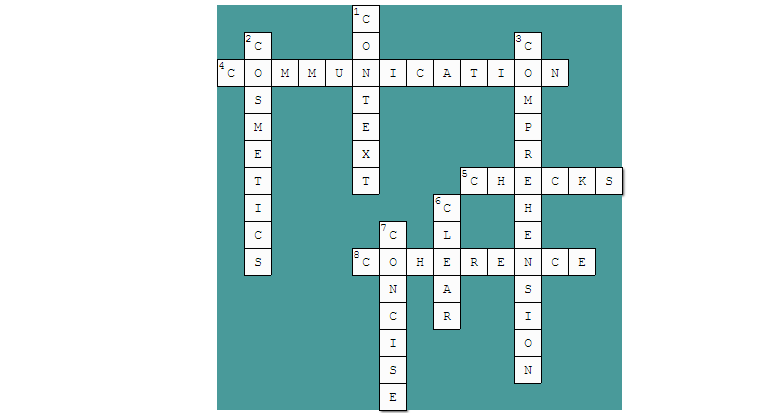News archive March 2016

Going global: how to translate a website
Having a website once represented a competitive advantage for businesses. In the space of just a few years, a website has become an essential tool and, without one, companies risk being cut off completely from the market.
Website creation has also developed considerably in recent years and we have moved from complex HTML coding to a template-based approach, which has streamlined the whole process significantly. This means that anyone can now have their own website, which can be as basic or sophisticated as budget and need allow.
Despite the progress made in terms of the technology, putting together a website still takes time, effort and a great deal of accuracy to ensure that the content is clear, effective and attracts attention. This is vital to ensuring that the company itself stands out from its competitors and catches the eye of potential customers. Many companies invest a great deal of time and resources in copywriting for their website, rightly aiming for high-quality content creation, but they are often hesitant when it comes to spending money on translating their site into other languages. Frequently they turn to unqualified sources or, in some cases, machine translation. As much as it might seem like machine translation is a convenient option, especially for smaller enterprises, the end result can be, at best, unnatural and unpolished and, at worst, plagued with errors, owing to the lack of appreciation of context.
All things considered, the translation of your website is just as important as the creation of the original content, and the task must be entrusted to someone who not only understands the language, but also understands the value of the product, who the target customers are, and how to best communicate the message you are trying to convey. A sloppy or sometimes incomprehensible translation can often have exactly the opposite effect of the one you are trying to achieve, distancing the customer and belittling the value of the brand.
A professional translator, on the other hand, can go beyond the “standard” translation of the website text, by localising your content or “transcreating”, i.e. creating new text adapted to the target culture, in a style that suits the context and the product. This is particularly important when it comes to keywords and search engine optimisation (SEO), and can affect where your website comes in the search engine results – page one or page ten?
3 practical ways to translate a website
As regards the technicalities of translating a website, there are various different approaches that can be adopted to keep costs down and optimise use of time.
For minimalist sites with a limited amount of content, the quickest option is to translate in Microsoft Word. The webmaster can then insert the extracts manually by copying and pasting into the website architecture.
Another option is a back-end approach, using platforms such as WordPress and Drupal, where the translator accesses the website directly via a user name and password. This has the advantage of skipping a step, as the text is entered directly on the website, but the process is much slower for the translator, who also has to work without the usual checking and review tools available on other platforms.
For larger websites with numerous pages, and for e-commerce sites, the optimal solution is to export the site text in .xls (Excel) format, with the integrated HTML coding. By doing this, the exporting and importing process is automated, thereby reducing the risk of error associated with copying and pasting to a minimum. The translator can use specific translation tools to protect the code, to make sure it is not altered or deleted by mistake, and is able to work in a familiar platform, with all of the usual tools for spelling, grammar and terminology checks to hand. It goes without saying that this has a positive impact on the overall quality of the translation.
Translating a website is a complex affair but it does not need to be a source of stress or frustration. Choosing a reliable partner and using the right tools are the first steps towards creating a multi-lingual website that it is both grammatically correct and culturally appropriate, to allow the world to get to know and appreciate your products, and attract new customers. Take action: go global!

“If you’re not there, you should be”: Milan’s Salone del Mobile
There is less than a month to go until the doors of the Salone del Mobile 2016 open in Milan. This is the largest trade show and international window for the furniture and interior design sector, where tradition and innovation come together in the name of quality and culture.
This 55th edition sees not only the furniture-focused Salone del Mobile and the its sister showcase of furnishings and accessories, the Salone del Complemento d’Arredo, but also the return of the biennial event “EuroCucina”, and its spin-off “FTK Technology for the Kitchen”, as well as the Salone internazionale del bagno, for the leaders in bathroom design.
This year looks to be packed with exciting events, and with over 30% of exhibitors coming from abroad, including from Egypt, Japan, India and Thailand. It promises to be a unique opportunity to show the world what’s new at your company, showcasing your skills and know-how in these sectors. It also represents the perfect window to expand into new markets, implementing your sales strategies to launch your products further afield, and to start collaborating with new partners and building new business relationships.
This makes it the ideal time to whip your documentation into shape, add some fresh pizzazz to your marketing material, and perhaps work on developing your sales pack in new languages for those markets you hope to break into. You might also be thinking ahead to the event itself: will you be able to communicate your all-important ideas, concepts and products clearly enough to the representatives of those new markets you want to conquer? What language will they speak?
LEXILAB can help you prepare for the event in the best way possible, providing support before, during and after. We can work with you to translate your new material from scratch, spruce up your existing copy, review and revise any existing translations to ensure they are up to date and reflect the right company image, and find the best qualified interpreters to help you communicate smoothly on the day. Whether you need to target European or more exotic languages, we are the partner for you. This also goes for formatting the final hard copy brochures or tweaking the structure and design to suit those new exotic languages.
Remember that the material you present, the conversations you have, and the information and impressions exhibitors and visitors take away from the event are the only ways you have of communicating your mission, your values, your brand, your skills, your added value.
Communication is everything at an event of this scale – make sure you invest the same time and energy in presenting your company and products as you did in creating them.

The five “C”s of translation
Five key factors to producing a successful translation, summed up in five simple “C”s.
Translating is a complex process that requires very specific skills, not something to be launched into without the necessary training and preparation or just a loose grasp of a language. To ensure a translation fulfils its purpose, there are certain steps that must be thought through. This requires time, in-depth research, careful crafting and reworking – Rome was not built in a day, after all.
So here are our 5 simple “Cs” to keep in mind:
CONTEXT – before starting any translation, context is key. Where will the translation be used and what for? Generally speaking, this could mean knowing whether it is a user manual, advertising brochure or press release, for example. Who is the target audience, i.e. is it intended for a specialist readership or for the layman with little or no knowledge of the topic? More specifically, if the translation is to be integrated into an existing text, where exactly will it go? Is there a grammatical structure to link to? What style is used? Which terms must be adopted?
COMPREHENSION – it is vital to fully understand the original source text. If something is unclear, how can it be rendered purposefully in translation? The serious risk is that the end user may not understand the instructions or information, not only making the whole process a waste of time but also devaluing the message itself. Understand first, then communicate the message clearly and concisely (see how many “Cs” there are in translation?).
COHERENCE – the factor that brings the whole text together, especially when it comes to technical translation. The same term should be used to express the same concept throughout: is it a door, a flap, a hatch, a cover? The same grammatical form should be maintained, especially in list formats: Always 1) read the manual carefully and 2) following the instructions. The style, tone and register should also remain the same: the user, you or even we?
CHECKS – spelling, numbers, punctuation, grammar, terminology, units of measurement, dates, images, graphics, tables, symbols, bold, italics, underlining, upper or lower case, justification, styles, subscripts and superscripts, breaks… (you can see where we are going with this).
COSMETICS – the polishing and final touches come in last but by no means least. Producing the perfect end product that is readable and fit for purpose means checking thoroughly for that erroneous spacing, rogue formatting, erratic punctuation or oddly split sentence.
More to it that you thought, right? Remember these five “Cs” the next time you think about translation and you are already halfway there. Context, comprehension, coherence…
